How to remove hanging moles on the neck? Medical and home methods. How to get rid of hanging moles on the body and face
It is difficult to find a person who does not have at least one mole (nevus) on his body. Few of their owners pay attention to these harmless growths on the epithelium, because they do not pose a threat to health. However, there are skin formations that require special attention and relationships, since their presence causes various problems - hanging moles.
Description of the neoplasm
A hanging mole is a benign formation, which is a papillary tumor developing from epithelial cells. It can become problematic as a result of injury and damage. In such cases, there is a risk of degeneration of the pigment growth into malignant neoplasm. The shape of a hanging mole makes it extremely easy to touch, tear off, or otherwise injure.
Nevi appear on human skin in places where melanin (skin pigment) accumulates in cells. The color saturation of the mole depends on its quantity (from light pink to the darkest tones).
Causes of hanging moles
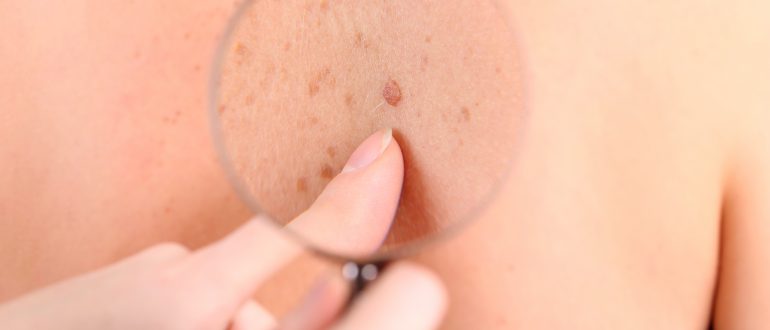 photo of a hanging mole
photo of a hanging mole The reasons for the formation of pigment formations on the epidermis can be very diverse:
- Genetic predisposition.
- Hormonal changes in the body (during pregnancy, puberty and other factors). Most often, hanging moles are diagnosed in women.
- Excessive exposure to ultraviolet rays (exposure to too much sun).
- Uncontrolled use of steroids, resulting in disturbances in the formation of collagen fibers.
- Stress components. Long-term nervous tension may lead to the appearance of pigmented growths.
- Chronic inflammatory diseases intestines.
Pigmented growths appear in a row various reasons, their difference is in the degree of danger. In addition, protruding tumors on the body are very often characteristic features human papilloma virus, alarming symptoms in case of malfunction internal organs, harbingers of possibly progressive cancer.
Nevi that appear as a result of the above reasons are considered acquired. According to medical statistics, they are characterized by malignant degeneration. Therefore, if such neoplasms appear on the body, it will never be superfluous to undergo medical examination to ensure its quality.
What is the danger of hanging nevi
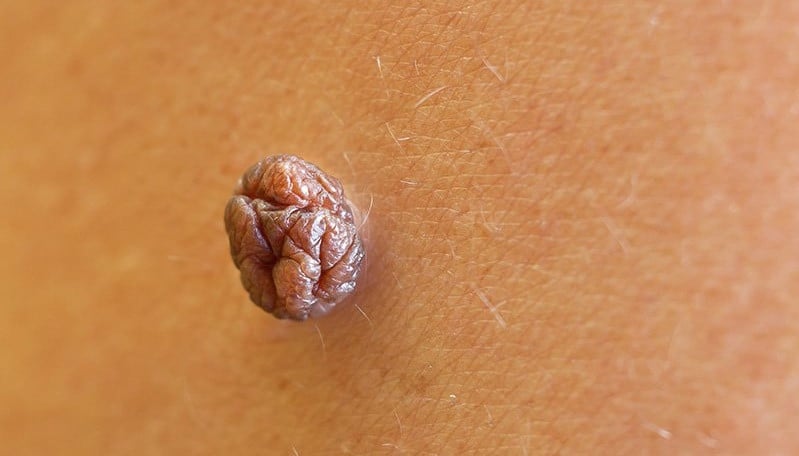 photo of hanging nevus
photo of hanging nevus Any changes that have occurred in the body of a pigmented neoplasm should cause certain warnings, which indicate problems with nevi:
- The surface of the growth has a characteristic shine.
- Signs of asymmetry and deformation during its growth.
- Losing hairs.
- Peeling surface or dry crust forming.
- The beginning of the inflammatory process.
- Dry crust or peeling that forms.
- Bleeding (when touched delicately).
- Itching and burning sensations.
- The appearance of wet discharge from the growth.
How big education can be dangerous
 photo of a large hanging nevus
photo of a large hanging nevus Not the best rare occurrence today - the appearance on the human body of hanging moles of significant diameters (with a predominance of a reddish tint). Doctors cannot come to a clear opinion about the occurrence of these large tumors. This kind of nevi can serve as symptoms various violations in the body: dysfunction of the large intestine, disorder of lipid (fat) metabolism, disorder secretory function pancreas.
Growths of considerable size that strongly protrude from the dermis can appear on different parts body and cause significant discomfort. Most often, such pigmented growths are localized on the back. Dislocation of large neoplasms on the head can cause discomfort in the form of severe itching. Similar cases require a mandatory consultation with a doctor, who will most likely prescribe removal of tumors in the optimal way for each patient and a course of maintenance therapy.
Hanging moles on the body and neck
 photo of a hanging mole on the neck
photo of a hanging mole on the neck These types of neoplasms are not congenital, because they appear in a person during life, although their occurrence may have been caused by genetic predisposition.
The appearance of a papillomatous nevus on the body is often provoked by the presence in the body of the human papillomavirus (non-oncogenic), most likely sexually transmitted.
Localization of pigment growths in intimate areas (in the genital area), armpits leads to the risk of accidental injury and, as a consequence, further growth (increase in size). You should be very careful and attentive to tumors in the axillary areas, without exposing them to external influences again. Since the location of numerous sweat glands in these places increases the risk of developing pathogens, promoting possible inflammation neoplasms.
Hanging moles in the neck are the most common manifestation in patients. They are characterized by the following features:
- Manifest against the background of changes hormonal levels at a more mature age.
- They are distinguished by the presence of two components (they have a high leg and a protruding, compacted, movable surface).
- They are equally exposed to the possibility of injury (men and women).
- They have a darker color when exposed to constant sunlight.
- Dangerous with their possible pathological changes(degeneration into malignant formations).
In what cases is tumor removal indicated?
 Any neoplasms on the human body raise many questions about their safety for health. By themselves, hanging moles cannot seriously affect the general condition of the body.
Any neoplasms on the human body raise many questions about their safety for health. By themselves, hanging moles cannot seriously affect the general condition of the body.
Their localization in open areas of the body (neck, face) can cause psychological discomfort. Everyone has the right to decide for themselves whether to remove such a growth, if it does not cause any particular inconvenience.
You should pay attention to hanging moles located in places favorable for development inflammatory process under the following circumstances:
- Their localization contributes to constant friction, injury to the growth, which can cause bleeding and painful sensations.
- Large-sized formations can be more easily damaged (under the influence of various external factors) and become inflamed.
- Possible twisting of the stem of the growth can impede the free circulation of blood, which, as a rule, causes swelling and pain.
- Neoplasms, located in large numbers on open areas of the skin, can provoke psychological discomfort.
Can hanging moles turn into cancer?
 photo of giant nevus
photo of giant nevus Skin cancer can occur in patients with hanging moles under certain circumstances. You should always pay attention to certain changes:
- With significant darkening of the tumor.
- With unclear, blurred boundaries of the growth.
- Whenever painful sensations; itching and bleeding.
- With obvious redness of the skin surrounding the growth.
- In the case of a rapid increase (growth) in the size of the formation.
- When large nevi appear in adulthood.
- When observing any transformations occurring in the structure of the neoplasm.
Timely contact with a specialist will help avoid negative consequences in case of diagnosis of cancer.
If at any time external influence(during epilation, shaving, combing, etc.) the growth was accidentally cut or torn off, it is necessary to save the remains of its body tissue for histological examination. Wound surface in mandatory process with any antiseptic to prevent the penetration of pathogenic microbes into the open wound (to prevent the possible development of the inflammatory process) and consult a doctor as soon as possible.
Ways to treat the problem
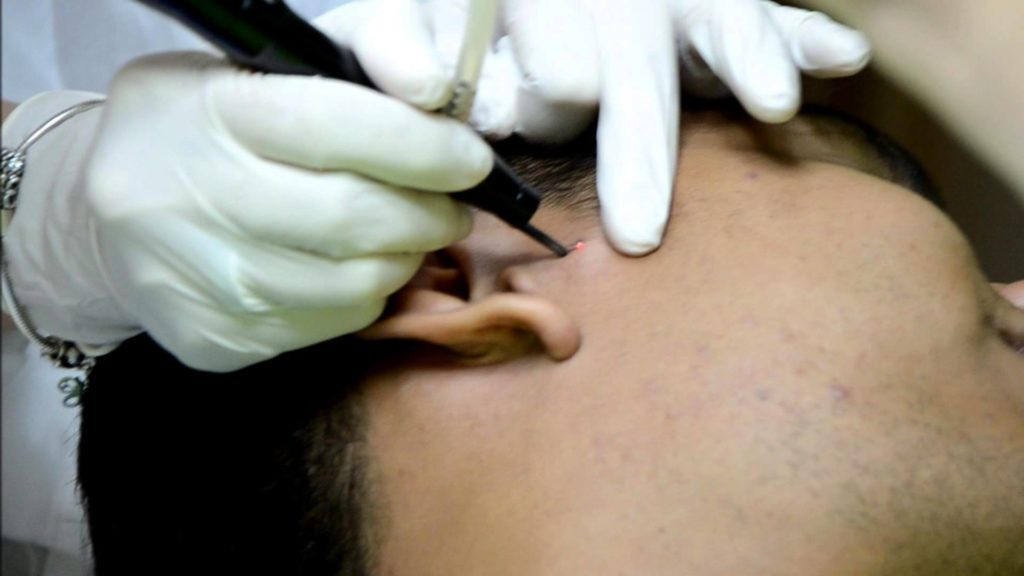 photo of laser mole removal
photo of laser mole removal There are the most different ways removal of hanging moles.
- Surgical method. Provides local anesthesia. Surgical excision a medical scalpel is prescribed for removing large tumors. When using this method, it is possible to conduct a histological examination of the removed growth to confirm its benign nature. IN postoperative period careful care is required.
- Cryodestruction. This method involves exposing the nevus to liquid nitrogen. low temperatures.
- Laser coagulation. Modern painless and quick way getting rid of unwanted growths with short rehabilitation period. After the procedure laser coagulation There are practically no scars left on the operated area of the skin. Application this method minimizes the development of the inflammatory process and relapses in the future.
- Electrocoagulation. An effective way to influence nevi with high frequency current. The disadvantage of the electrocoagulation method is the longer recovery period.
Who is at risk
- Most often, people who are prone to the appearance of hanging moles on the body fair skin too sensitive to prolonged exposure to direct sunlight.
- Also, these types of formations are more likely to occur more often in women than in men, which is presumably due to increased level estrogen.
- Patients with burns (thermal or chemical).
- People who are uncontrollable for a long time in the sun, without using sunscreen.
Hanging moles on the body require constant monitoring. If the tumor suddenly turns black or undergoes any other changes, you should consult a dermatologist.
Women are recommended to undergo an annual examination for preventive purposes. You should not remove birthmarks at home, as this poses a high risk of infection of the neoplasm and possible malignant degeneration.
At proper care pigment growths will remain only a cosmetic problem that does not require serious treatment.
In the 18th century, a mole or “sight” was an indispensable adornment for every self-respecting coquette. Ladies of that time believed that the lucky owners of moles were marked by Venus herself. And in our time, a cute mole can be an undeniable attribute of beauty and sexuality. But, unfortunately, not all formations on the body are aesthetically pleasing and safe for the health of their owner.
Hanging moles on the neck and other parts of the body are a cause of discomfort for many people. The skin shoots have the shape of a papilla and sometimes resemble a mushroom. The palette of shades of moles can be very diverse, as well as their size. However, it is not entirely correct to call all skin neoplasms moles - this is rather a common name. Medical concept“Nevus” includes all pigmented skin formations and refers to all moles and Nevus (acquired or congenital) is usually benign in nature. But there are risk groups that require mandatory monitoring by a specialist - a dermatologist.
People at risk include:
- with a large number of hanging moles on the body;
- if size skin formations more than 5 mm;
- with red hair and very fair skin;
- with age spots;
- pregnant women.
There is no need to panic, try to guess why hanging moles appear, diagnose yourself, or, even worse, self-medicate. There are a great many reasons for the formation of moles, and oncology is not necessarily to blame. To establish a correct diagnosis, it is necessary to undergo a series of examinations: blood sugar levels, cholesterol and other indicators, and an ultrasound of the internal organs.
There are no places on the body where a mole cannot form. They can be located anywhere: on the face, in the armpits, under the breasts, in the groin and even in the anal area, but hanging ones are most common. Finding such a formation in some places causes purely physical inconvenience. Experts recommend removing them where they may be subject to various mechanical damage.
It doesn’t matter for what reason the decision was made - physical discomfort or a cosmetic defect. Choosing how to remove a hanging mole, and which method is best to carry out this removal, is best left to professionals - cosmetologists and dermatologists. There are many available now various methods elimination of hanging moles: electrocoagulation, radio wave coagulation, laser removal or surgically, cryodestruction (liquid nitrogen). It is extremely undesirable to remove hanging moles on the neck using “grandmother’s” remedies, such as rubbing the shoots on the skin with celandine or cauterizing with iodine. If damaged there is real threat degeneration of a benign mole into malignant melanoma. This is a serious disease, better known as skin cancer, and of course, it is easier to prevent than to treat.
Some simple rules melanoma prevention:
- do not abuse the effect of ultraviolet radiation on moles and birthmarks (this is especially true for those formations that are not hidden under clothing - hanging moles on the neck, face, palms, etc.;
- avoid any mechanical damage to moles;
- Regularly monitor changes in the normal condition of hanging moles.
Signs that require immediate medical attention:
- the mole has increased in size;
- any thickening of the mole;
- the mole has changed color;
- discomfort in the mole area, itching;
- the mole is bleeding;
- the skin on the mole has become stretched and the skin pattern has disappeared;
- increased noticeably total quantity moles on the body.
If the mole has been damaged or torn, you need to treat it with hydrogen peroxide and go to a medical facility. There, the injured mole will be expertly removed and sent to If the mole has completely separated from the skin, it must be taken for analysis, wrapped in a sterile napkin or bandage soaked in saline solution.
There is no point in delaying contacting a doctor. The sooner a problem is discovered, of course, if it exists, the faster and more successfully it can be eradicated.
Moles and birthmarks are hyperpigmented areas of skin formed by melanocytes. The growths may vary in size and color, rise above the surrounding skin, or appear as a dark, flat dot. Every person has nevi; with age they increase, in some cases they degenerate into malignant form. A mole on the neck can be intradermal, papillomatous or fibroepithelial.
The main reason for the appearance of nevi is a hereditary predisposition. In young children they may not be noticeable, but as they grow older the skin stretches and moles become more large sizes. Pigmented neoplasms can appear in large numbers during puberty, pregnancy, and menopause.
Why moles appear on the neck:
- prolonged exposure to direct sunlight;
- hormonal imbalance;
- frequent skin injury;
- autoimmune diseases;
- skin infections, acne, rashes;
- radiation, x-rays.
Depending on the location, moles on the neck are intradermal, with melanocytes located in the deep dermal layer of the skin. The epidermal type is characterized by an accumulation of pigmented cells in the upper epidermis, the borderline type is characterized by the presence of melanocytes at the border of the dermis and epidermis. An intradermal mole on the neck on the right or left looks like a convex pea, a border nevus looks like a smooth, dark spot.
The color of the new growths varies from flesh-colored to black-violet. A red tint indicates the presence of small blood vessels. Small growths usually do not pose any threat, but if they are hanging, they can be injured by the collar of clothing, bleed, or become infected. Some large moles can degenerate into a malignant form (melanoma) with constant mechanical impact and solar insolation.

A hanging mole on the neck in the middle or in the back is an oblong outgrowth of the epidermis. It has a soft consistency, flesh-colored or pink, less often brown. This nevus appears after prolonged exposure to ultraviolet rays. Similar clinical picture represent papillomas that grow after a person is infected with papillomavirus; the main difference is a thin stalk at the base of the growth. Both neoplasms bleed easily when mechanical damage, so if a mole often rubs against the collar, it must be removed.
Diagnostics
The patient is examined by a dermatologist or oncologist. The doctor determines the type of nevus, selects treatment tactics, and eliminates the possibility of malignancy. The number of moles that appear, color, size, consistency is important. The doctor asks if the patient is bothered discomfort(pain, itching), bleeding, discoloration, fluid secretion, how quickly the growth grows in size.
Additionally, dermatoscopy, phosphorus isotope analysis, echography, x-ray, and thermometry are performed. To identify cancer cells, a piece of tissue is taken for a biopsy.
Treatment options

A large melanoma-dangerous mole cannot be removed cosmetically; excision should only be carried out surgically after an examination. In most cases, nevi cause aesthetic discomfort and inconvenience to people. You can get rid of tumors in the following ways:
- electrocoagulation;
- cryodestruction;
- laser removal;
- radiosurgery;
- classic excision with a scalpel.
The removal method is selected by the doctor, taking into account the size and type of nevus. The least traumatic of them is laser exposure; after evaporation of the liquid by a carbon dioxide beam, fast healing tissues, no bleeding, no scars.
If many moles appear on the neck, you should not try to get rid of them on your own. The skin in this area is very delicate, well supplied with blood, and if it is damaged, infection can occur. bacterial infection, an ulcer, suppuration, or abscess will form. In addition, multiple convex growths can be caused by papillomavirus. In such cases, therapy with immunomodulators and vitamins are required, otherwise the disease will recur.
Appearance large quantity moles are also observed with hormonal disorders in a child in adolescence, during pregnancy, after menopause. In people suffering from diseases thyroid gland, diabetes mellitus, is formed dark spot or a mole on the back of the neck, in the armpits, inguinal folds, on the bends of the elbows, on the forehead along the hairline. Patients with such symptoms should consult an endocrinologist.
If nevi appear on the neck, you cannot use folk remedies for treatment without first consulting a dermatologist.
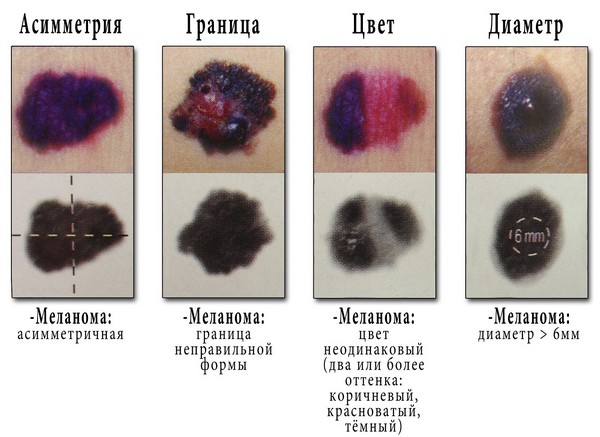
Suspect education cancerous tumor based on the following symptoms:
- rapid increase in the size of a mole more than 6 mm in diameter;
- pain on palpation;
- secretion of ichor;
- ulceration, formation of a crust on top of the growth;
- the appearance of a black dot on a mole;
- irregular shape, unclear edges.
The first sign of melanoma is the growth of a mole, change in color and shape.
Preventing the appearance of new moles
To prevent new moles from growing on the neck, the following rules must be followed:
- avoid long stay in the sun;
- monitor the level of hormonal balance, see an endocrinologist;
- refuse to visit the solarium;
- periodically visit a dermatologist if there are large moles on the body, large birthmark on the neck.
During summer holiday by the sea, the beach should be visited in the afternoon, when sun rays have a less aggressive effect on the skin, use creams with high degree UV protection. If you experience symptoms of nevus degeneration, you should immediately consult a doctor, since melanoma can very quickly metastasize to almost all internal organs.
In this article:
Hanging moles on the body or face do not bring much pleasure to their owners. I don’t want to put up with such a phenomenon because it is unaesthetic. In addition, there is a popular opinion that such formations are very dangerous and are not a type of ordinary nevi. Where is the truth and where is the lie? We will try to answer the most popular questions.
Hanging formations and their main characteristics
So, what are hanging moles? These are benign formations, which are one of the varieties of classic nevi. Their main difference is that such pendants have a certain volume, that is, they protrude above the surface of the skin and resemble small processes. In most cases, they are not a sign of any disease, however, most often, specialists classify them as dangerous, requiring constant monitoring. TO distinctive characteristics Such formations include:
- Uneven structure.
- Typical location (in the groin, armpits, neck and back, although they can be observed in other places);
- Color (most often flesh-colored, sometimes ranging from white to brown).
Hanging moles are often confused with another type of nevus, a pedunculated formation. In fact, they are not the same thing; it is quite easy to distinguish them. In the first case, the mole begins to grow directly from the skin, and in the second, it has a small, thin arrow, the crown of which is the nevus itself.
The reasons for the appearance of formations of this kind
Hanging moles appear on the human body not by chance. The reasons for this phenomenon are quite varied and have not been fully studied by doctors. Most often these include:
- Hormonal surges (can be caused by natural causes or medications).
- Excessive tanning (and it doesn’t matter whether you like to soak up the sun or regularly visit the solarium).

- Pathology of internal organs.
- Oncology.
- Genetic predisposition.
- Papillomavirus.
Most common spawn zones
Let's talk in more detail about the dangers of hanging moles located in different areas human body. The whole point is that any, even ordinary benign education may be injured as a result of our careless actions. The consequences of such a situation can be very disastrous for health. How can this happen and what should be done in such cases?
Nevi in the armpits
Hanging moles under the armpits appear quite often. The main danger in this case is the presence of a large number of sweat glands, which create a favorable environment for the emergence and development of bacteria. The slightest injury, which often occurs during shaving in this area, leads to inflammation. That is why experts recommend getting rid of such moles.
Nevi on the neck
Formations on the neck are also quite dangerous, and in this case there is even a double risk. This includes constant interaction with clothing (seams, straps, collars, scarves and much more) and sunlight (in spring and summer, the skin on the neck is almost always open and accessible to ultraviolet radiation). The combination of these factors over time can lead to degeneration of the appendage into malignant tumor.
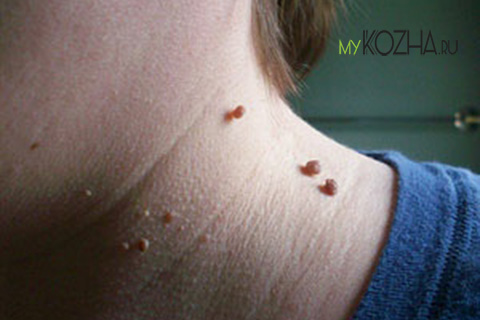
Nevi in the groin
Hanging moles in intimate area cause inconvenience in rare cases. However, many women have a complex about their presence and are embarrassed to undress even in front of their husbands. The main danger lies in possible injury during shaving, as well as the interaction of the nevus with the seams of the underwear.
If the removal of hanging moles occurred unintentionally, in everyday conditions, then there is a high chance heavy bleeding and infection in the wound. To eliminate such risks, it is necessary to treat the problem area with a large amount of hydrogen peroxide, and then apply and clamp a sterile swab on the wound site. No additional processing is required, however, if desired, you can apply a little brilliant green. Visit a specialist as soon as possible.
Attention, danger!
Sprout formations are not a direct sign serious illnesses. For the most part, they are absolutely harmless, but a large number of them should make you think twice and visit a doctor, at least for advice. Hanging moles are subject to mandatory examination by specialists if you notice the following symptoms:
- Itching or burning throughout long period time.
- Education has increased significantly in size.
- A compaction can be felt under the formation.
- The mole has turned black or has changed its color significantly.
- A light halo of significant diameter formed around the nevus.
If hanging moles on the body turn black, then this is a very bad omen. Most often, such a sign is considered a harbinger of cancer. To exclude possible risks, be sure to go through the removal procedure and further study of the formation.
Methods of disposal
How to get rid of hanging moles? This question worries many owners of such formations. In fact, the operations in this case are no different from the usual removal of nevi. Treatment can be carried out using laser, surgery, nitrogen. The first method is the most popular of those proposed. Laser procedure It is effective, moderately expensive, short-term and lacks any consequences or side effects.
Of course, the doctor conducting your personal examination should answer the question of how to get rid of hanging moles. For large lesions with a significant risk of developing cancer, it is recommended surgical operation. In this case, the removed nevus can be submitted for histology, that is, a detailed study can be carried out.
Now you know how to get rid of hanging moles, what they are and for what reasons they appear. You should not be afraid of such formations; they are completely natural. If they cause you aesthetic discomfort or are at risk of injury, be sure to visit a specialist and have the nevus removed.
Moles on the skin are harmless compactions of the epithelium. However improper care behind them and damage to the top layer can lead to unpleasant consequences. Take care of your health and prevent illness in time.
In this article we will look at the reasons for the appearance of hanging moles on the body, how to remove them yourself and with the help of a doctor. Always ask for help at early stages diseases: this way you will save your energy and money on expensive treatment.
Definition
A mole is a benign growth of various sizes and shapes. It does not cause any inconvenience to its owners, but if damaged it can become a tumor.
What is the difference between hanging seals and ordinary ones?
- An ordinary growth is closely connected to the skin, while a hanging growth is connected to the epithelium using a small bridge.
- The described neoplasms are somewhat lighter in color. If the former are characterized by cream tones, then the latter are brown and black.
- Appearance. Cone-shaped, while conventional seals are slightly round.
Why do hanging moles appear?
Only a specialist can determine the real factor in the formation of growths. It is not always caused by an infection in the body. Sometimes hormones, genetic predisposition, and long exposure to the sun can become a significant factor. For precise determination use modern tests and research.
On the stomach
The location of the tumors depends on the situation: in most cases they are located above the abdomen. Pregnant girls may notice that several small soft moles have appeared below.
The following factors also exist for this phenomenon:
- Metabolic disorder. This serious disruption in the body can cause diseases of the thyroid gland, which controls hormonal balance.
- Diabetes mellitus. The process of insulin production stops or the rate of its formation decreases. Moles are only a consequence of improper functioning of the body.
- Diseases of the female genital organs. The body suffers from hormonal imbalances and tries to somehow cope with the current situation. One of serious reasons the adrenal glands may become diseased.
On my feet
Lumps on the legs appear very rarely. Most often they are localized on the thighs, next to other growths located near the genitals.
What could be the reason for their appearance?
- Swelling of the legs. Due to the workload, it is difficult for pregnant girls to move actively. Swelling can be a factor due to which several moles appear in the perineum.
- Using an epilator. Mechanical hair treatment can leave ingrown hairs, which later turn into small growths.
- Thermal clothing for fitness. In an effort to lose weight, some beauties wear very tight shorts that do not allow air to pass through. Because of this, the body heats up - friction causes irritation.
In my arms

The place where the tumor can most often be found is the shoulder and forearm area. It is very rare to observe growths on the hands.
What causes hanging moles on the hands?
- Dangerous chemicals. People who work in laboratories with hazardous substances suffer from nevi.
- Gloves. Their frequent use leads to increased sweating and irritation of the skin of the hands. Under high risk there are people doing their work wearing rubberized gloves.
- Ultraviolet. For a sensitive person, it is destructive: you need to know exactly how long your skin can be exposed to direct rays.
On the neck
Here you can find various neoplasms and warts, since throughout the day the skin in this place is exposed to many negative factors, including irritation.
- Causes of hanging moles on the neck:
- Changes in hormonal levels, due to which the growth of epithelial cells increases. This may be caused various diseases thyroid gland and genital organs.
- Narrow collar. The neck constantly rubs against the fabric, which causes redness and growths on the skin.
- Skin injuries, especially razor damage, can have a negative impact on general condition epithelium in this place.
On the neckline
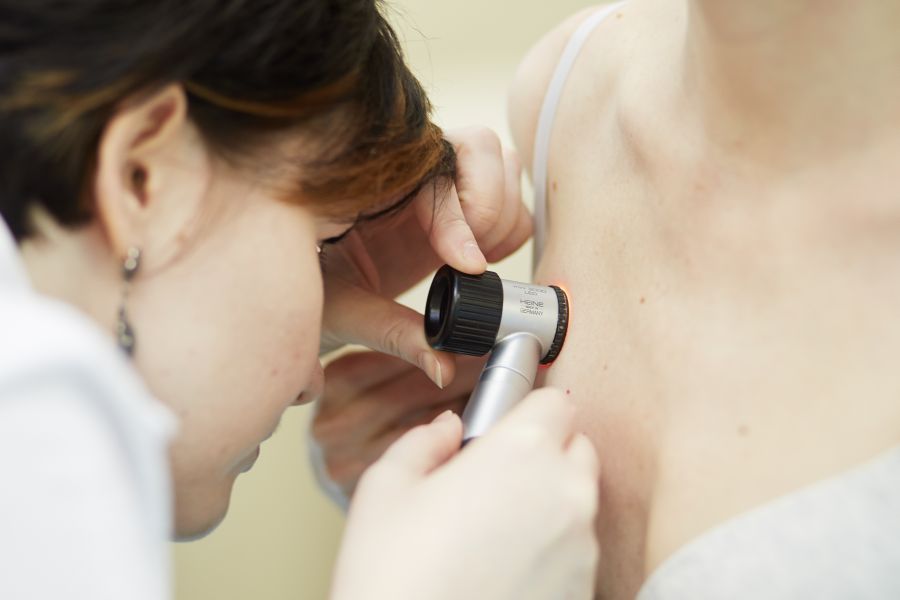
This zone is almost constantly open in women, and therefore is subject to strong exposure to ultraviolet rays. In addition, pregnancy or miscarriage is considered a factor in the occurrence of growths. All this leads to a serious hormonal imbalance, which leaves marks on the skin of girls.
Remember that many people confuse HPV in the body (human papillomavirus) with a mole, and cannot distinguish one from the other. To find out for sure, you need to contact a specialist and conduct several tests.
In the crotch
If hanging moles grow and hurt in your groin, this may be a sign of a serious infectious disease. What other factors influence the location of growths?
- Using wax strips. Particles often accumulate in the follicles of ingrown hair, which contribute to the appearance of new growths.
- Some girls use deodorant in this area. This is strictly forbidden, as the natural protection of the skin is disrupted.
Armpits
What can cause hanging nevi in one of the most delicate parts of the body?
- Visiting the solarium too often. Girls who have developed sensitivity to ultraviolet rays should know their norm. An excess threatens the appearance of growths.
- Frequent shaving with a blade also negatively affects the condition of the skin in this area.
- Deodorants that contain organic solvents can damage and “corrode” the skin, causing dryness and irritation.
Treatment at home
Many dermatologists categorically advise against choosing the treatment method yourself: any incorrectly chosen method can have a detrimental effect on your delicate skin. Before removing a mole yourself, be sure to consult with a specialist.
Using natural acids
The following substances are capable of destroying growths of any kind. They are included in many medications:
- Acid in apples. You need to take one fruit, grind it to a pulp and apply it to the sore spot. In a few months the tumor will go away.
- Acid in lemons. Another natural product, which can be used effectively to combat moles. You can buy crystals and soak them in water, or you can squeeze a few drops out of fresh fruit with your hands.
- Salicylic acid. Refers to organic. It dries out the skin, but is good for removing both papillomas and moles. For the growth to disappear, it is necessary cotton swab cauterize the problem area.
Using hair
The essence of this method is to block the access of blood to the growth with your hair, after which it will dry out and fall off. Human or horse hair must be used.
If you have repeatedly wondered how to get rid of a hanging mole at home and how to remove it without consequences, then here are the instructions:
- We take the hair and wrap it around the growth at the root. We are waiting: in a couple of days it will begin to dry out.
- We use new hair and press it again. Do not be afraid that the tumor has darkened, this means that it will soon disappear.
- Horse hair is elastic and difficult to tie, and therefore one cannot cope with such a task on one’s own.
Using vinegar
If you don't want to dry it out skin, then use the gentle method of mole removal. Apple cider vinegar– this is great folk remedy, which has proven itself in the times of our grandparents.
You can either drip vinegar onto the cleansed growth, or make compresses at night. This effective way will save you from suffering. After a couple of weeks, the tumor will crust over and then disappear completely.
How to remove a mole in the hospital
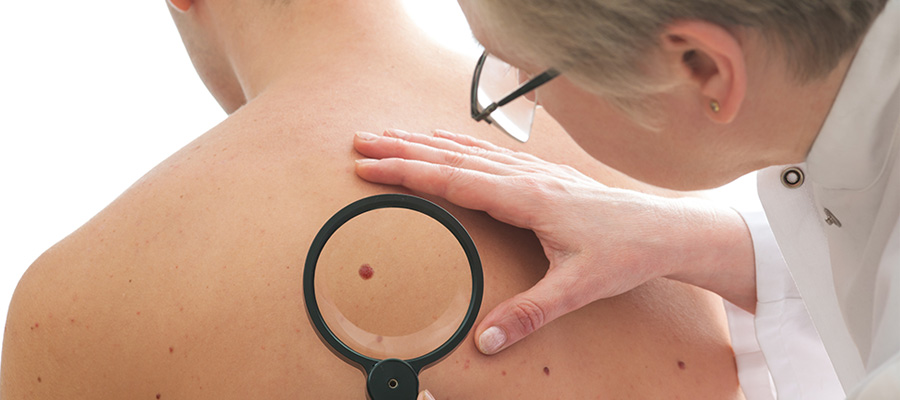
Traditional medicine is not always able to provide full assistance. Professional removal of hanging growths is carried out by cosmetologists and clinics. They are able to conduct a thorough diagnosis and painlessly perform surgery, preventing an ordinary nevus from turning into a malignant tumor.
So, let's say that you have a lot of small hanging moles and you don't know what to do. Modern methods treatments include the following:
- Excision. Assumes underneath surgery. In this way, you can remove growths located in open places - on the arms and legs. A doctor can also prescribe it if, after a biopsy, it turns out that the mole contains cancer cells. It is removed along with part of the entire epithelium, and after excision, stitches are usually applied and a small scar remains.
- Laser. If the institution has necessary equipment, then it is better to choose laser removal. It is absolutely painless and leaves no traces. The main effect that this mechanism has is the destruction of epithelial cells inside the growth and the cessation of blood supply.
- Cryodestruction. This method has proven itself among other procedures for its simplicity: moles and papillomas are burned off with liquid nitrogen. Under the influence of low temperature, all cells in the nevus die.
- Electricity. Quite an old, but time-tested method. Almost every hospital has equipment for performing the operation. A metal thread connected to a current cuts off the tumor without leaving any traces. There is no wound as such: the skin does not bleed.
Whatever method you choose, be sure to consult with your doctor. He will tell you the best way out of the current situation.
In this article, we examined what such growths are, where and why they usually appear, and also suggested treatment - at home and in the hospital. Remember about the timely removal of a hanging mole, wherever it is - under the armpit, on the neck or in groin area. Take care of your health.

